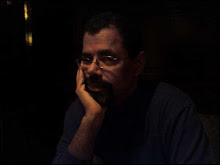Like most people, I've been glued to the new media for updates on the aftermath of Hurricane Katrina. Unlike a lot of people, most of this was radio, print and Internet reporting. I missed the teevee coverage.
So I was pretty surprised to find that the "big" story for several days on teevee was the looting of what remains of New Orleans. Young Negroes scurrying around with items which didn't originally belong to them, acting like, well, like most young men in the aftermath of a disaster. This seemed to be the dominant theme for a couple of days. Teevee viewers shook their heads, tut-tutted and said to themselves, "They don't make much of a case for helping them. Where's the charity, the neighborliness, the warm, fuzzy stories of people helping people we need in these times?"
They were all over the print, radio and Internet. I read them and was amazed at how many children seemed to rise to the occasion. One story told of a boy who pulled his family members who couldn't swim to safety as the house was flooded. Another told of a six-year-old boy who had six or seven smaller children in tow, leading them to safety without adult supervision. These stories were all over print, radio and Internet sources.
Someone once said they preferred radio over television because the pictures were better. With teevee, you need immediacy. You need, "here's a picture of what's happening now" to make it sell. But rescue stories generally come out well after they're reported. They read well, but they don't look good enough, often a static interview, which just can't compare to the naked visual of people running rampant.
Radio and print, in comparison, can draw complex pictures, and tie together disparate images. They can tell more, and in more varied ways. That's where the news is. But in times of trouble, the tendency is to run to the tube and see what's happening, even though it really isn't. We feel more connected when we see pictures. But it's not the news.
So middle America ends up with this weird distorted vision of what really happened in and around New Orleans. Eventually, the whole truth will come out. Fortunately, there's NPR, New York Times, Washington Post, New Orleans Times-Picayune and the rest of the real media to tell the tale.
Terry Preston's in-depth views on the pressing issues of the day, from God, sex and national politics to the high price of a good beer at the ballgame. Any and all comments to these comments are encouraged.
Sunday, September 04, 2005
Subscribe to:
Post Comments (Atom)

No comments:
Post a Comment